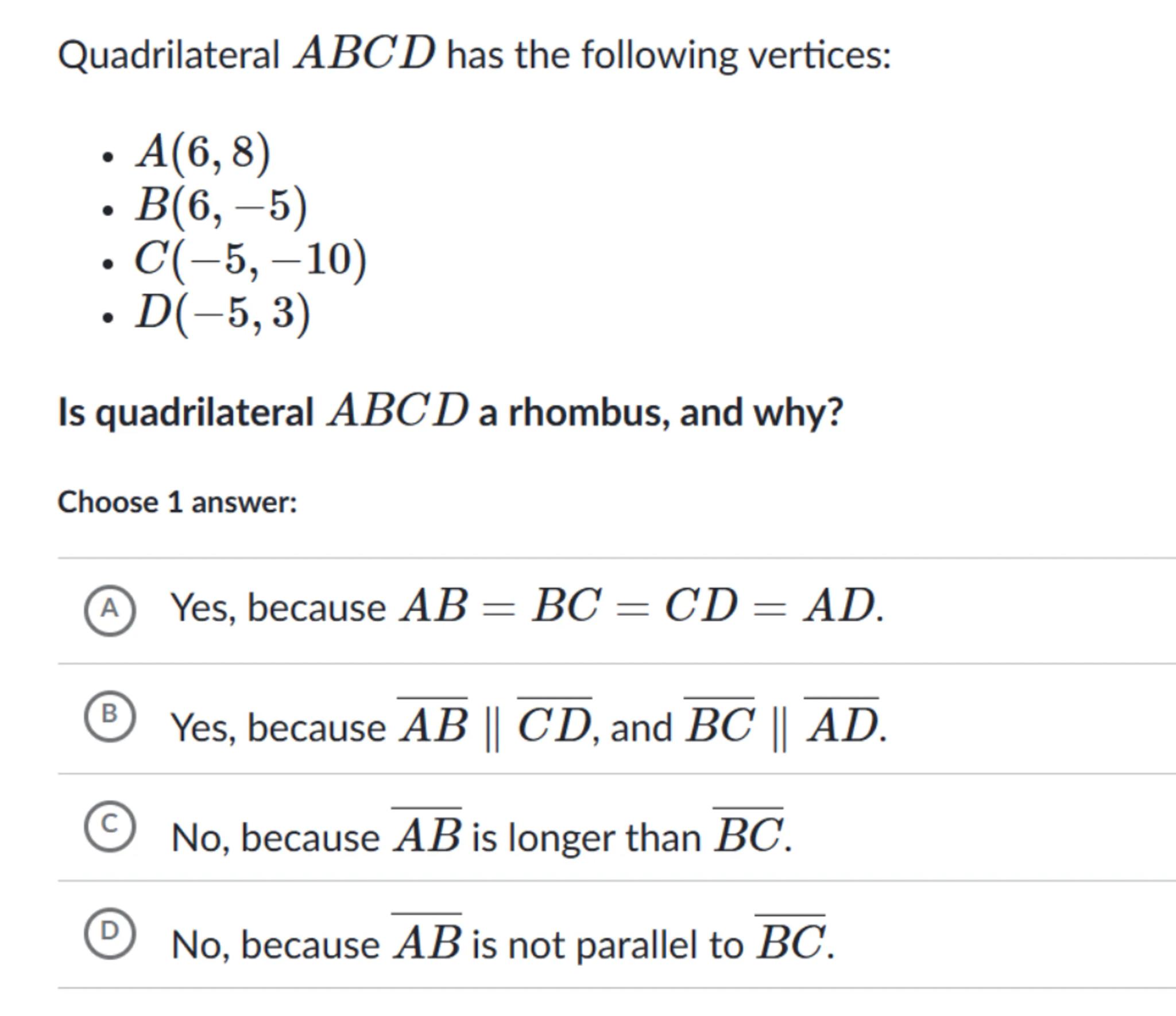
Sia

Question
Math
Posted over 1 year ago
Quadrilateral has the following vertices:
-
-
-
-
Is quadrilateral a rhombus, and why?
Choose 1 answer:
(A) Yes, because .
(B) Yes, because , and .
(C) No, because is longer than .
(D) No, because is not parallel to .

Answer from Sia
Posted over 1 year ago
Solution by Steps
step 2
Using the asksia-ll calculator results, we find that , , , and
step 3
Since and , but , the sides are not all equal
step 4
The asksia-ll calculator also confirms that lines and are parallel, as well as lines and
step 5
However, for a quadrilateral to be a rhombus, all four sides must be equal in length, which is not the case here
1 Answer
D
Key Concept
Properties of a Rhombus
Explanation
A rhombus is a quadrilateral with all sides equal in length. While has opposite sides that are parallel, and are not equal, thus is not a rhombus.
Not the question you are looking for? Ask here!
Enter question by text
Enter question by image
Unlock Smarter Learning with AskSia Super!
Join Super, our all-in-one AI solution that can greatly improve your learning efficiency.
30% higher accuracy than GPT-4o
Entire learning journey support
The most student-friendly features
Study Other Question